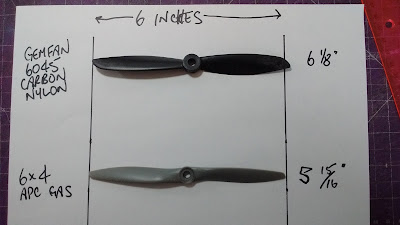I recently received a FlySky FS-i6 transmitter and receiver package from Banggood to evaluate as a starter radio for a person wanting to get into park jets and other RC planes.
In this video which is part of my park jet workshop series, I discuss some of my philosophies and lessons learned about getting started with a transmitter suitable for park jets. I know that many folks have had good luck with the FlySky FS-i6, so I wanted to see how it would work out😀
I paid about $42 USD for mine on sale, you can also buy them for cheaper without a receiver at Banggood, on Ebay and I assume many other vendors. If you shop around, you can get them for pretty cheap and the receivers are also very inexpensive.
The receiver that came with mine can be used for telemetry which is a bit of overkill for my use, but it was the best price and I wanted to evaluate a FlySky receiver.
If you are thinking of buying one, I would strongly encourage you to watch Andrew Newton's video below, it was where I learned about the basic capabilities of this inexpensive transmitter.
In the series of videos I have made on this transmitter, I refer often to this video and a couple of other videos Andrew Newton has made, so I don't try to "reinvent the wheel" on the basices since Andrew does such a great job already😀.
Here is the playlist of videos I made about how I learned the basics and fine tuning of setting up a six servo park jet without needing on board mixers, servo reversers, it can all be done quite simply in the transmitter.
One lesson that I learned is that in my excitement I forgot to confirm the transmitter has a countdown timer.😟 It doesn't in the stock configuration unfortunately, but there is a firmware update available that looks like it can be done quite simply. However, in order to do so, I will need this cable setup to make that happen. I have ordered the cable, but don't expect it here for about a month from now😞
Oh well. I am very impressed with the capabilities of mixing and fine tuning with this inexpensive transmitter. With three two position switches and one three position switch plus two variometers, it has lots of functionality that way.
Here it is compared to my current Turnigy 9x.
It is quite light, with four AA batteries, it weighs about 460 gr/16.2 oz. Compared to my Turnigy 9x which weighs 832 gr/29.3 oz with an 1800 3S LiFe transmitter battery.
I certainly didn't buy this FS-i6 to replace my Turnigy transmitter, primarily to evaluate it as a good starter park jet transmitter. I know lots of folks have used it with great success, but I wanted to have one in my hands and see it things work out😀 The nice thing is I can change the protocol in the transmitter and use my current receivers that are compatible with my 9x transmitter.😊
I have three videos done in the playlist linked above, one my basic intro to this video series, the second one showing the basics of setting up a six servo park jet to have elevons, independent ailerons (that only work in the roll and not the pitch) and rudders. The third video shows how I found ways to fine tune the throws in the pitch and roll axes primarily. The techniques demonstrated in my videos are ones I found through trial and error, there may be smarter and faster ways to do it, and perhaps your setup might be different than mine. However, I found it very straight forward and could start from scratch and have a new plane setup and fine tuned in less than a half hour.
After getting some evaluation done at the field, I will be writing another post on my impressions of this inexpensive transmitter.
In the second phase of this inexpensive Park Jet transmitter series, I am going to set up a back up Turnigy 9x transmitter to be flashed with Open TX. I currently run er9x in the 9x transmitter show above, but Open TX seems incredibly powerful and for a $4 tiny USB setup, hopefully I will be able to have a very capable transmitter for very little outlay of cash. I'm hoping this might help people have a second option for a transmitter if they are new to the hobby, either way will require an outlay of less than $100😊
Park Jet noise...the "other" sound of freedom😎
Cheers,
Scott

































